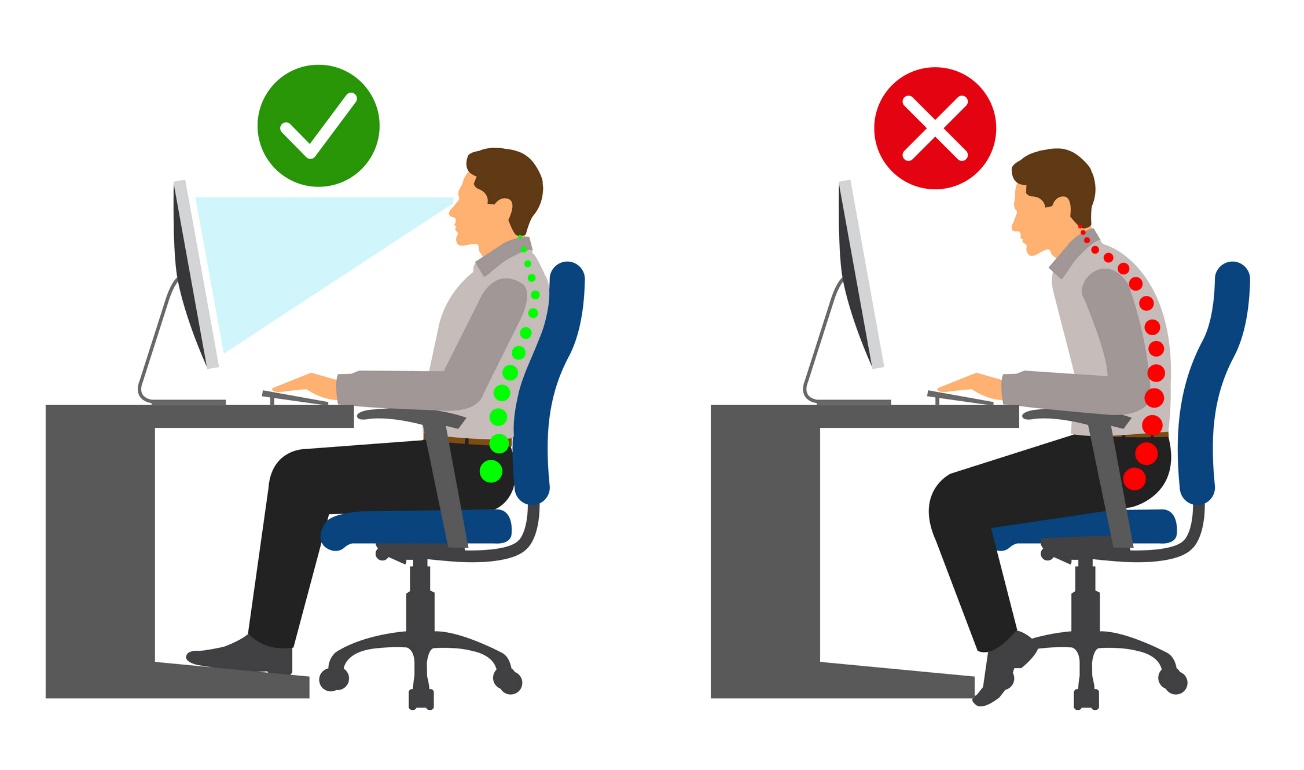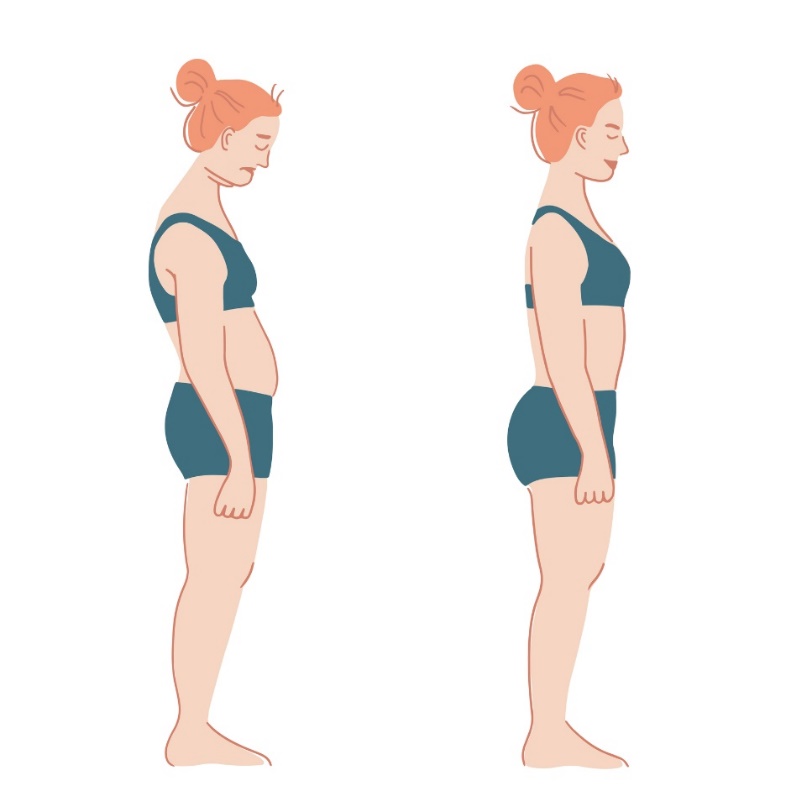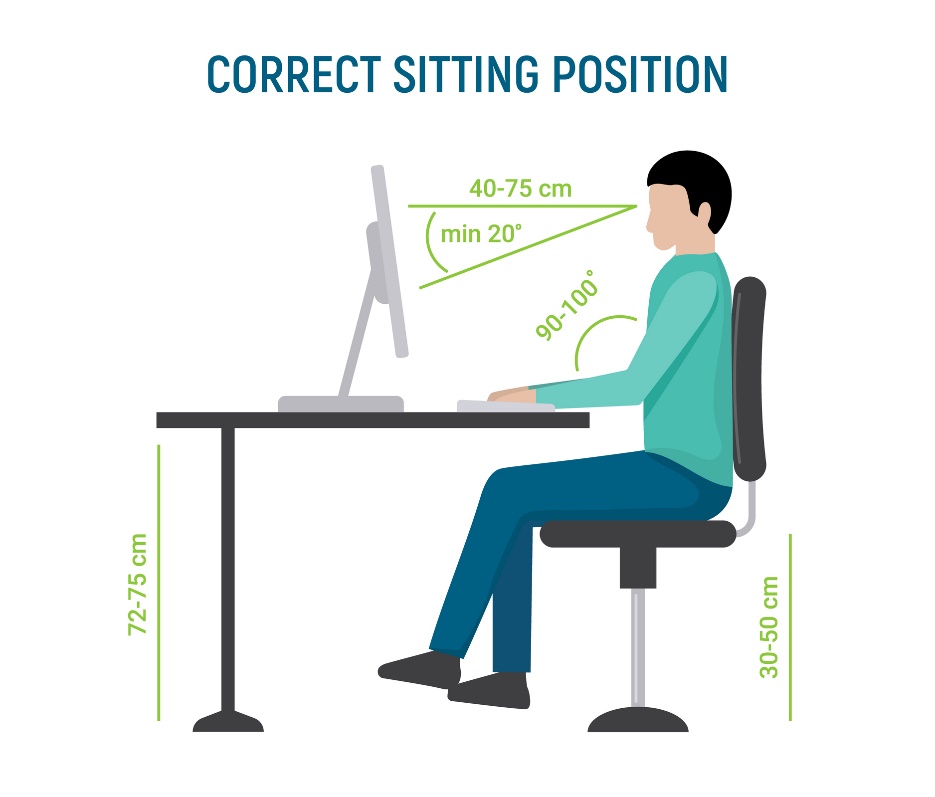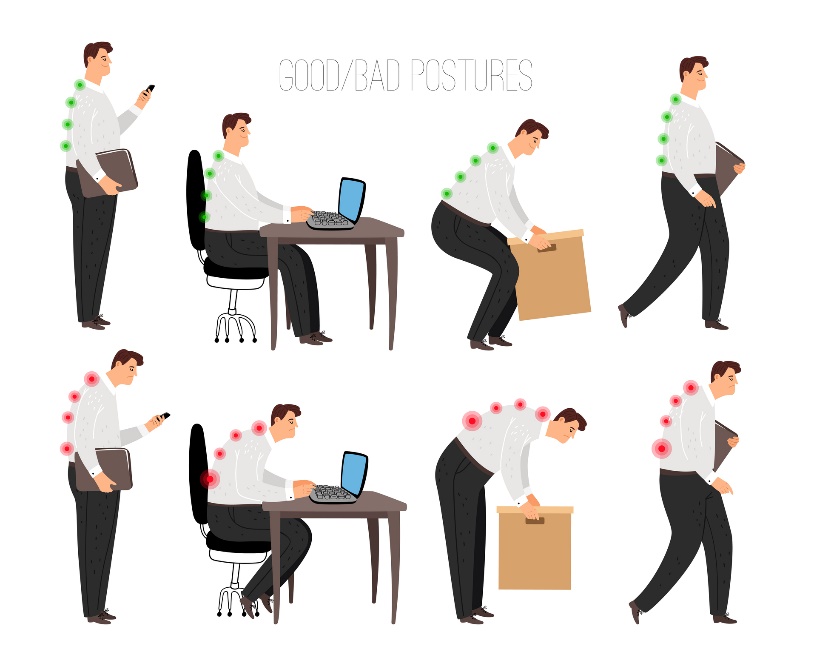- KOLÁŘ, Pavel. Rehabilitation in clinical practice. Second edition. Prague: Galén, [2020]. ISBN 978-80-7492-500-9
- Social and occupational rehabilitation. Prague: Social Rehabilitation: Charles University, Karolinum Publishing House, 2021. ISBN 978-80-246-4986-3.
- pubmed.ncbi.nlm.nih.gov - Workplace interventions to improve sitting posture: a systematic review. by Paul Alan Swinton, Kay Cooper, Elizabeth Hancock
- medicalnewstoday.com - Sitting positions for good posture. MedicalNewsToday. by Jennifer Huizen
How to sit properly? Choosing an office chair for healthy sitting and prevention

Improper daily sitting can cause muscle pain, musculoskeletal imbalances and spinal problems. What are the principles to follow when sitting and what should be avoided?
Article content
What does "healthy sitting" mean?
Correct or healthy sitting is sitting that does not cause muscular imbalances and musculoskeletal pain.
Muscle imbalance is a condition where one muscle group is overstretched and another muscle group is weakened. By sitting in a correct ergonomic yet comfortable way, potential health problems can be prevented.
Ergonomics is a discipline that studies the needs of human beings and their relationship to the surrounding work environment and its conditions.
Ergonomics in the workplace is primarily concerned with appropriate sitting, standing, object handling and other activities related to the musculoskeletal system at work.

Common sitting errors and health risks
There are many ways of sitting incorrectly or unphysiologically. Similar stereotypes of comfortable sitting tend to be repeated. A typical symptom is, for example, forward posture of the head and shoulders leading to excessive cervical lordosis.
Sitting errors occur for a variety of reasons. Reasons include incorrect standing posture, inappropriate desk and chair height, incorrect monitor to head distance, incorrect chair type, unphysiological shoulder posture when using a mouse/pen, and overexposure to stress which causes a person to reflexively slip into an incorrect posture.
Non-physiological sitting poses a risk of muscular imbalance and subsequent pain or joint locking.
The most common muscular imbalances that arise from computer work are known professionally as upper and lower crossed sitting syndrome.
Upper Crossed Muscle Syndrome
Upper crossed muscle syndrome is the most common muscle problem arising in the neck, shoulders and chest.
The forward posture of the head (SMS neck) causes excessive overuse and shortening of the trapezius muscles in the back of the cervical spine.
The imaginary cross consequently leads to a weakening and weakening of the anterior cervical muscles. The muscle tension of the anterior cervical muscles may be weakened and reduced.
The forward posture of the shoulders gradually shortens the pectoral muscles of the thoracic spine. Consequently, there is a decrease in tone in the interscapular muscles of the thoracic spine.
An imbalance of the upper crossed muscles can result in cervical spine pain, headaches, pain in the shoulder blade area, the development of a cervical hump, forward posture of the head and shoulders, and shortening of the pectoral muscles.
Lower crossed muscle syndrome
Lower crossed muscle syndrome is an imbalance of the lower spine and pelvis.
Excessive extension of the pelvis and relaxation of the abdominal wall results in weakening of the abdominal muscles and consequently excessive crossing of the lower spine.
This phenomenon is caused by excessive lordosis of the lower spine. It can also result in weakening and decreased tone of the gluteal muscles.
Imbalance of the lower muscles can manifest itself as back pain, lumbar spine pain, pelvic instability, weakening of the abdominal wall, and weakness and hypotonia of the gluteal muscles.

When sitting, try to avoid:
- Prolonged unchanged posture
- Forward head posture
- Relaxation and extension of the shoulders
- Raising the shoulders towards the ears
- Excessive lordosis of the cervical spine
- Elevated and relaxed abdominal wall
- Too high a table height
- Small monitor distance from the eyes
- Hard and uncomfortable chair
- Chair without a headrest
Proper seating as prevention of device health
With the right choice of chair, desk height and environmental adjustments, physiological sitting does not have to be uncomfortable.
When concentrating on work, the musculoskeletal system relaxes into different positions.
Therefore, it is advisable to eliminate this phenomenon by adapting appropriate working conditions to the environment and, in particular, by occasional self-monitoring to force a change in the relief position.
The basic prevention of cervical spine pain is to reduce the activation of the trapezius muscles.
This can be achieved by pulling the chin towards the body (imaginary creation of a double chin), lowering the shoulders down away from the ears and bringing the scapulae closer together.
It is advisable for the seated person to try to imaginatively tuck the pelvis and activate the gluteal muscles. This will reflexively remove the loose abdominal wall and duck pelvic posture.
A prolonged forward (duck) pelvic posture while seated would overload the lower back muscles.
It is recommended that the height of the table should not be too high. With a table that is too high, the shoulders are automatically lifted up and at the same time the overloaded trapezius muscles are activated.
The elbow and arm should be at a comfortable angle of approximately 90-100 degrees when sitting.
The monitor should be approximately 40-70 cm from the head. The eyes should be at the level of the upper third of the monitor. When this condition is observed, one does not have to constantly bend the cervical spine and thus engage the overloaded trapezius muscles.
A headrest is also useful. It allows the head and cervical spine to be relieved by leaning back while avoiding the textbook neck position.

Principles to look out for when sitting:
- Shoulders freely lowered away from the ears
- Eliminate trapezius muscle activation
- Imaginary chin (double chin)
- Reasonably straight spine
- Head in direct extension of spine
- Thighs at 90 degrees or more with the trunk
- Sufficient distance between head and monitor
- Occasional change of position during working hours
- Intermittent breaks and light spine and neck exercises
During working hours it is advisable to use a short break for simple back and neck relaxation exercises.
From the point of view of ergonomics of movement, it is advisable to use a wide squat when lifting loads. In the squat, the spine remains straight and is not overloaded as in a simple forward bend without using the lower limbs.

Choosing an office chair
Choosing a chair for everyday, long-term activity is very important. The right working conditions are essential for preventing musculoskeletal health.
The chair should ideally be adjustable in height, slightly flexible, have back and head support and, last but not least, be comfortable for the person (not too hard or soft).
However, some softening of the chair at the coccyx and seat bumps is advisable.
Various rehabilitation/exercise aids can be used in different seating variations. Sometimes large fitness balls are also used to actively sit on and engage a number of muscles during sitting.
This option is suitable but only for a certain period of time as part of postural change. An overball (a small flexible gymnastic ball) which is inserted between the back of the chair and the individual's spine is also popular.
It is used for active upright sitting, as the sitter must try not to drop the overball . However, it is again only useful for a certain period of time for changing body posture.
The ideal choice is to alternate positions during working hours (sitting on an office ergonomic chair, sitting on a fit ball, standing, semi-sitting).
An individually adjustable ergonomic chair is the basis for a healthy posture when sitting for long periods of time.

Exercises to relax the cervical spine while sitting
Chin tuck (imaginary double chin)
The starting position for this exercise is seated, with the spine straight and the head in its imaginary extension. The shoulders are freely lowered together with the upper limbs from the ears towards the floor.
Note the lifted shoulder joints towards the ears and the activation of the trapezius muscles. The exercise consists of pushing the chin back, creating an imaginary double chin. This activates the anterior neck muscles, which are usually weakened.
Conversely, pulling the shoulders away from the ears and stretching the cervical spine reflexively stretches the posterior group of neck muscles.
Relaxation and lateral stretching of the trapezius muscles
The starting position is again seated with the spine straight and the arms and shoulders lowered away from the ears. The eyes are looking straight ahead. With the right hand, grasp the left ear (left side of the head) and pull the head towards the right shoulder.
As a result, we try to touch the right ear with the right shoulder. We stay in this position, breathing smoothly and stretching the left trapezius muscle. It is possible to feel a slight stretching of the muscle fibres.
Do not fluctuate in position, hold the stretch for at least 15 seconds and then switch hands and sides.
Interesting resources










